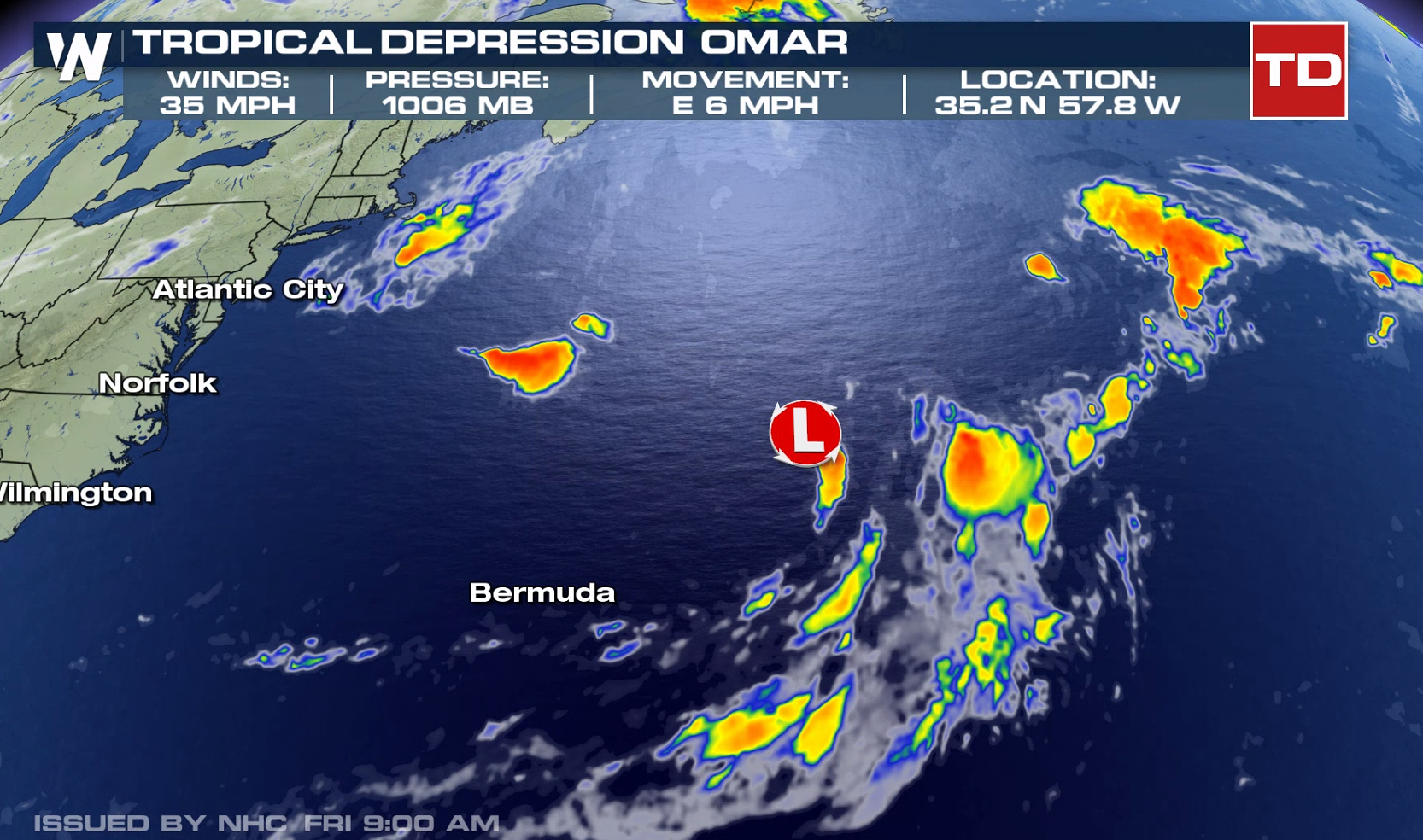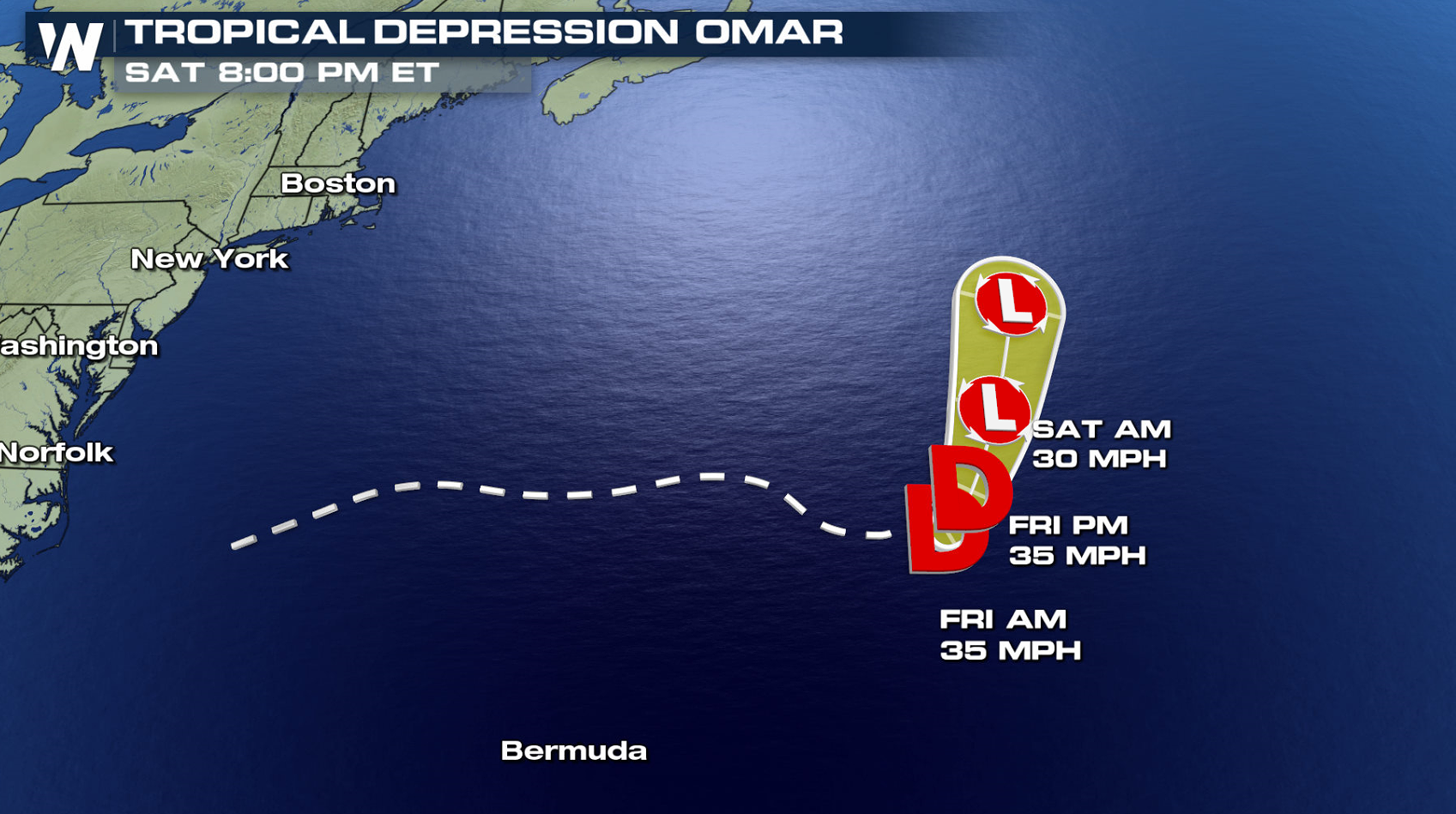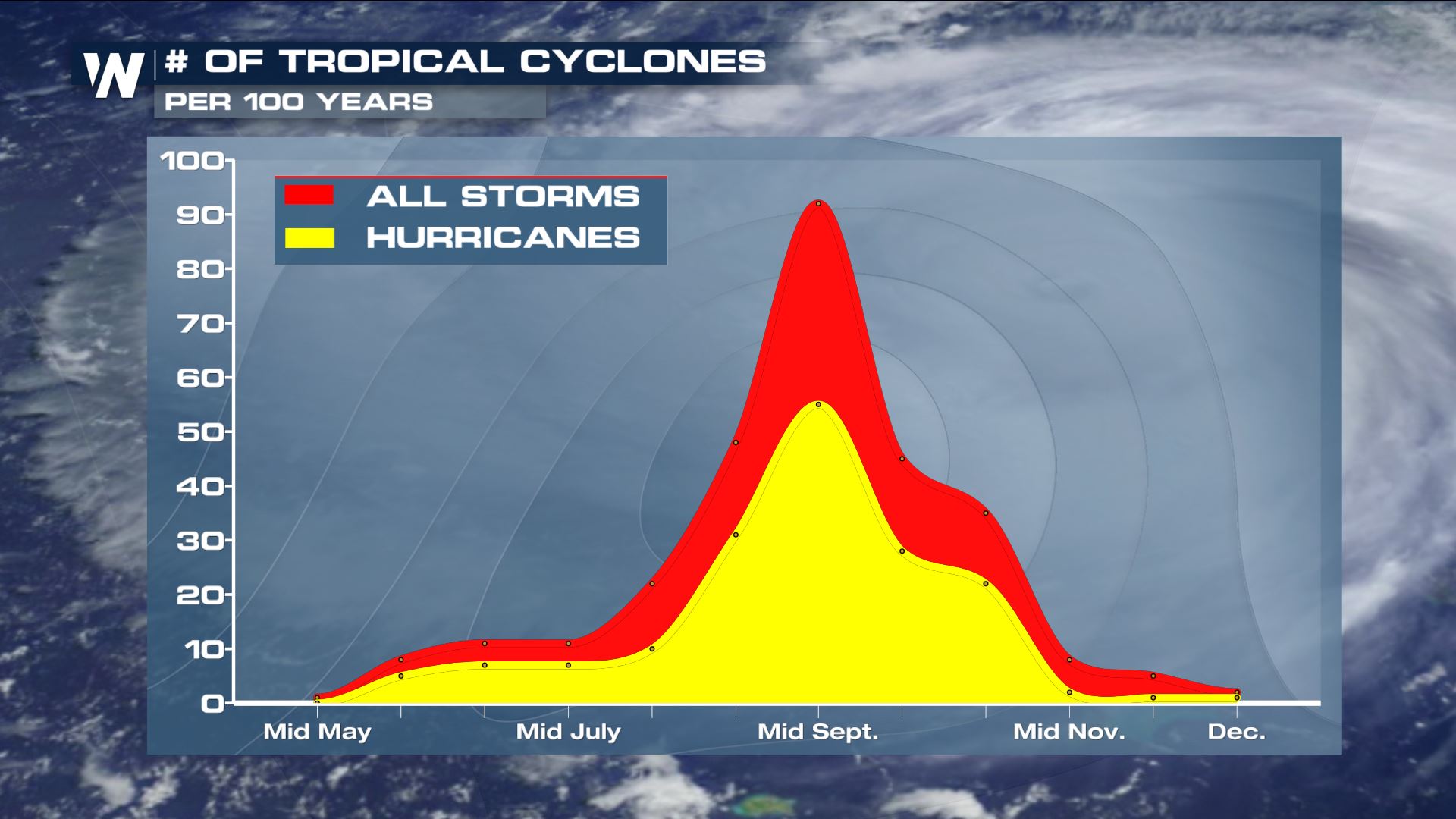Omar Has Come and is Almost Gone
Top Stories
4 Sep 2020 8:45 AM
Tuesday, September 1 at 5 p.m. ET: Tropical Storm Omar forms.
24 hours later: Omar loses the tropical storm badge.
The National Hurricane Center (NHC) says Omar weakened below tropical storm status Wednesday, September 2 about 250 miles north of Bermuda. In an advisory Thursday morning, NHC estimated the minimum pressure to be 1006 millibars while the storm sailed east at a steady pace of 6 miles per hour, farther and farther away from the United States. East coast beaches may still experience strong rip currents from this storm, so please use caution if entering the ocean water.
 Omar is forecast to slow down a bit this week, transitioning from a tropical depression to a remnant low. Omar rapidly deteriorated, from a satellite perspective, due to wind shear on Wednesday. In fact, NHC used the word "blistering" to describe the upper-level winds that were affecting Omar.
Omar is forecast to slow down a bit this week, transitioning from a tropical depression to a remnant low. Omar rapidly deteriorated, from a satellite perspective, due to wind shear on Wednesday. In fact, NHC used the word "blistering" to describe the upper-level winds that were affecting Omar.
 Omar joins a list of several short-lived storms in the Atlantic this hurricane center. However it was the earliest "O" named storm to form on record, beating Ophelia in 2005 by 6 days.
The Atlantic Hurricane Season runs from June 1 - November 30 and typically September is the most active month for hurricane development in the Atlantic basin. Here's a look ahead of what the peak of the Atlantic Hurricane Season looks like:
Omar joins a list of several short-lived storms in the Atlantic this hurricane center. However it was the earliest "O" named storm to form on record, beating Ophelia in 2005 by 6 days.
The Atlantic Hurricane Season runs from June 1 - November 30 and typically September is the most active month for hurricane development in the Atlantic basin. Here's a look ahead of what the peak of the Atlantic Hurricane Season looks like:
 We are heading to the peak of hurricane season, so keep it tuned to WeatherNation for all of your tropical updates.
We are heading to the peak of hurricane season, so keep it tuned to WeatherNation for all of your tropical updates.
 Omar is forecast to slow down a bit this week, transitioning from a tropical depression to a remnant low. Omar rapidly deteriorated, from a satellite perspective, due to wind shear on Wednesday. In fact, NHC used the word "blistering" to describe the upper-level winds that were affecting Omar.
Omar is forecast to slow down a bit this week, transitioning from a tropical depression to a remnant low. Omar rapidly deteriorated, from a satellite perspective, due to wind shear on Wednesday. In fact, NHC used the word "blistering" to describe the upper-level winds that were affecting Omar.
 Omar joins a list of several short-lived storms in the Atlantic this hurricane center. However it was the earliest "O" named storm to form on record, beating Ophelia in 2005 by 6 days.
The Atlantic Hurricane Season runs from June 1 - November 30 and typically September is the most active month for hurricane development in the Atlantic basin. Here's a look ahead of what the peak of the Atlantic Hurricane Season looks like:
Omar joins a list of several short-lived storms in the Atlantic this hurricane center. However it was the earliest "O" named storm to form on record, beating Ophelia in 2005 by 6 days.
The Atlantic Hurricane Season runs from June 1 - November 30 and typically September is the most active month for hurricane development in the Atlantic basin. Here's a look ahead of what the peak of the Atlantic Hurricane Season looks like:
 We are heading to the peak of hurricane season, so keep it tuned to WeatherNation for all of your tropical updates.
We are heading to the peak of hurricane season, so keep it tuned to WeatherNation for all of your tropical updates.All Weather News
More